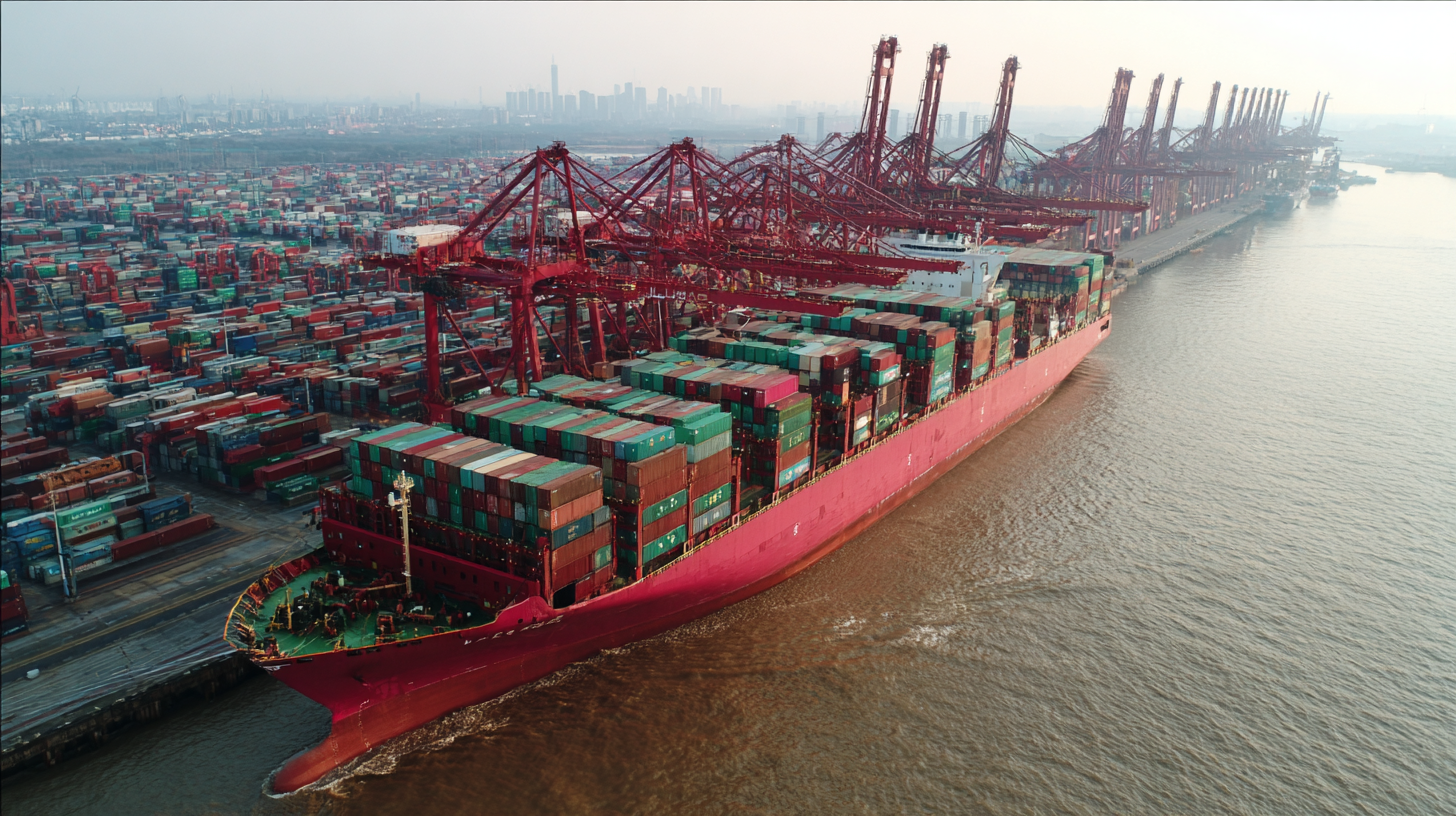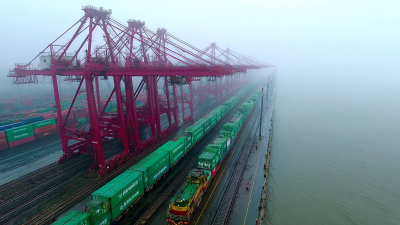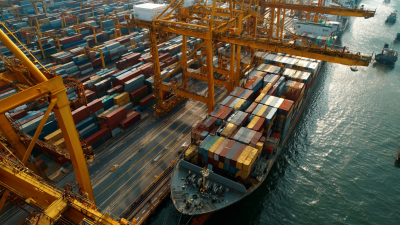The unprecedented rise of global eCommerce has catalyzed significant changes in international trade, particularly in the realm of "Shipping From China." According to a report by the China Internet Network Information Center (CNNIC), the country's eCommerce market surpassed $1 trillion in 2020, reflecting a staggering growth rate of 27.5% year-on-year. This surge is closely tied to the increasing demand for Chinese goods across the globe, which has made China a critical hub for global supply chains. A study by McKinsey indicates that 75% of businesses worldwide are now leveraging online platforms, highlighting the necessity for efficient shipping solutions. Furthermore, the World Trade Organization (WTO) forecasts that world merchandise trade volume could grow by 8% in 2021, with China playing a pivotal role in this expansion. This article aims to delve into the multifaceted dynamics of shipping from China, elucidating the opportunities and challenges that arise within the ever-evolving eCommerce landscape.

The surge of e-commerce has significantly enhanced the role of Chinese shipping in the global marketplace. Recent developments in regions like Xinjiang have highlighted how local e-commerce growth is bridging the gap between Chinese products and international consumers. As trucks line up at cross-border e-commerce industrial parks, the accessibility of Chinese goods is increasing, promoting a direct link to global markets. This rise is further propelled by shifts in air cargo costs, which could drop substantially due to changes in tariff exemptions, enabling businesses to transport products more affordably.
This dynamic situation is also reflected in the competitive landscape of Chinese e-commerce platforms, which have seen record numbers of orders amidst a growing demand for efficient delivery services. The recent tightening of VAT obligations for delivery services in China aims to enhance the efficiency of logistics, ensuring that e-commerce can thrive in the face of global economic challenges. While the overall decline in traditional air cargo transport signals shifting consumer behaviors, it underscores the adaptability of the Chinese shipping sector to meet the evolving demands of the e-commerce boom.
| Year | Total ECommerce Sales (USD Billion) | Shipping Volume from China (Million Tons) | Percentage of Global Shipping | Major Destination Regions |
|---|---|---|---|---|
| 2020 | 4,000 | 150 | 40% | North America, Europe |
| 2021 | 4,500 | 180 | 42% | Asia, North America |
| 2022 | 5,000 | 200 | 45% | Europe, Africa |
| 2023 | 5,500 | 230 | 48% | Asia, Australia, North America |
The expansion of shipping services in China has been significantly influenced by several key factors amid the rise of global eCommerce trends. According to the China National Bureau of Statistics, the eCommerce retail sales in China reached approximately $2.3 trillion in 2021, indicating a year-over-year growth of 15.3%. This robust growth in online consumer spending has driven businesses to enhance their logistics and shipping capabilities to meet the increasing demand for faster and more efficient delivery options.
Moreover, technological advancements play a crucial role in the evolution of shipping services. The integration of artificial intelligence (AI) and big data analytics has revolutionized supply chain management, enabling companies to optimize shipping routes and reduce costs. A recent report by McKinsey highlights that companies leveraging advanced analytics in logistics have seen a reduction in transportation costs by up to 15%. Furthermore, the rise of cross-border eCommerce has prompted Chinese shipping companies to expand their operations globally, tapping into new markets and increasing their competitiveness on the world stage. This trend is projected to continue, as global eCommerce sales are expected to exceed $6.3 trillion by 2024, presenting a tremendous opportunity for growth in shipping services from China.
This chart illustrates the growth of shipping volume from China over the past six years, showcasing the rise in shipping services amidst the global eCommerce trend. The data indicates a steady increase on a year-over-year basis, reflecting the expanding role of China in international trade.
The interplay between global supply chain dynamics and the expansion of Chinese shipping is a testament to the evolving landscape of international commerce. As eCommerce continues to thrive, the demand for efficient shipping solutions has surged, prompting logistics and shipping companies to adapt swiftly. The significant growth projected in the global dynamic positioning system market, from $8.49 billion in 2023 to $17.48 billion by 2032, underscores the increasing reliance on technology to optimize shipping processes and enhance navigational accuracy.
Recent partnerships between major logistics firms and technology providers emphasize the commitment to building resilient supply chains. For instance, a leading shipping company recently renewed a strategic collaboration with a telecommunications giant, aiming to innovate supply chain management over the next few years. This alliance highlights a proactive approach to addressing the challenges posed by fluctuating global trade patterns and underscores the importance of leveraging technology to streamline operations, thus positioning Chinese shipping as a crucial player in the global marketplace.

With the exponential growth of eCommerce, Chinese shipping companies are facing a myriad of challenges that threaten their expansion in global markets. According to a 2023 Statista report, China's eCommerce market reached a staggering $2.4 trillion, making it a dominant force in online retail. However, shipping companies must navigate issues such as increased freight costs, port congestion, and regulatory complexities. The ongoing global supply chain disruptions have emphasized the need for efficiency and adaptability in shipping practices.

To thrive in this competitive landscape, Chinese shipping companies should consider implementing technology-driven solutions. As highlighted in a recent McKinsey study, 66% of top-performing logistics firms are investing in digitalization strategies to streamline operations and enhance customer experience. Moreover, adapting to sustainable practices can attract eco-conscious consumers while complying with emerging regulations aimed at reducing carbon footprints.
Tip: To mitigate the impact of high freight costs, shipping companies can optimize their routes using AI-powered logistics platforms, ensuring timely delivery while reducing operational expenses. Additionally, fostering strong relationships with local authorities will help navigate regulatory hurdles more effectively, ultimately benefitting their bottom line.
The growth of eCommerce has profoundly influenced shipping practices, particularly in China, which has emerged as a global eCommerce powerhouse. As consumers anticipate faster delivery times and enhanced service, shipping companies in China are adapting by investing in technology and logistics infrastructure. This shift is not just about speed; it’s also about efficiency and capacity to handle increasing volumes of parcels traveling both domestically and internationally.
Tip: Businesses looking to optimize their shipping strategies should focus on integrating advanced tracking systems, which can greatly enhance customer experience. Adoption of these technologies not only helps in providing real-time updates but also allows for better inventory management.
Future trends indicate that the evolution of Chinese shipping will closely correlate with advancements in eCommerce platforms. As more Chinese firms engage in cross-border trade, they must align their shipping processes with the latest market demands. Sustainable practices are also becoming pivotal, with echoing calls for greener shipping solutions to meet global environmental standards.
Tip: Companies should consider partnering with eco-friendly logistics providers to reduce their carbon footprint. This alignment with sustainability can improve brand image and cater to the growing consumer preference for environmentally responsible practices.







